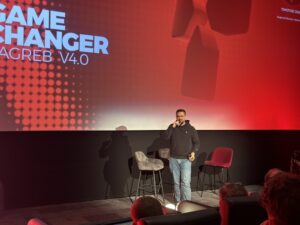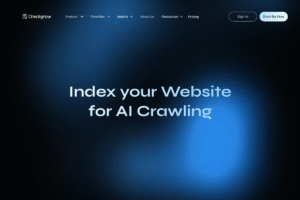Table of Content
- The Scaling Paradox: Why Adding People Slows You Down
- The Compounding Cost of Repetitive Tasks: A Tax on Growth
- Human Error: The Unavoidable Byproduct of Manual Data Handling
- How Manual Processes Create System-Wide Bottlenecks
- The True Cost of Manual Workflows: From Wasted Time to Lost Revenue
- The Automation Fallacy: Why Disconnected Tools Aren’t the Answer
- The Agentic Shift: Moving from Reactive Triggers to Proactive Systems
- Agentic Workflows in Action: Real-World Scenarios
- Building a Revenue-Centric Operating System for Growth
The Scaling Paradox: Why Adding People Slows You Down
Every scaling business eventually confronts a paradox: growth in headcount and resources does not produce a proportional increase in output. In fact, beyond a certain point, adding more people can make an organization feel slower, more complex, and less responsive. The instinct is to blame communication overhead or cultural shifts, but the root cause is often more tangible and far more corrosive. It lies in the operational foundation of the company itself.
The culprit is the hidden cost of manual workflows, the intricate web of copy-pasting, manual data entry, and human-driven processes, the intricate web of copy-pasting, manual data entry, and human-driven processes that were manageable at five employees but become an anchor at fifty. These workflows are the silent killer of scale. They don’t just introduce friction; they actively drain revenue by consuming time, introducing errors, and creating bottlenecks that stall the entire commercial engine.
This article dissects the true, multi-layered cost of manual operations and introduces the strategic shift required to solve it, moving beyond simple automation toward intelligent, agentic systems that create a truly scalable foundation for growth.
The Compounding Cost of Repetitive Tasks: A Tax on Growth
Repetition is the silent tax on organizational productivity. On the surface, individual manual tasks appear insignificant. Logging a new lead in the CRM, copy-pasting performance data from an ad platform into a spreadsheet, or sending a series of standardized follow-up emails might each take only a few minutes. The danger lies not in the single action but in its relentless frequency, scaled across an entire team and measured over months and quarters.
Consider the daily reality in many sales and marketing teams:
- Manually logging leads and activities: A salesperson spends time meticulously entering notes, contact details, and interaction histories into a CRM, a task essential for tracking but devoid of strategic value.
- Data transfer between tools: A marketing analyst exports CSV files from Google Analytics, Facebook Ads, and LinkedIn Ads, then manually combines them in a spreadsheet to build a weekly performance report.
- One-by-one outreach: A business development representative methodically sends individual follow-up emails, checking a list and personalizing a template by hand for each prospect.
These minutes accumulate with brutal efficiency. Research from McKinsey validates this, showing that knowledge workers spend up to 28% of their week on low-value, repetitive tasks. This figure is staggering when contextualised. It represents more than one full working day, every single week, for every employee, lost to administrative drag.
For a team of ten, this translates to over 400 hours per month, the equivalent of two and a half full-time employees, dedicated entirely to work that creates no new value. These are hours that could be invested in building client relationships, negotiating complex deals, or developing long-term market strategy. Instead, they are consumed by routine work that modern technology can and should handle autonomously. This constant drain on time is the first, most visible layer of the cost of manual workflows.
Human Error: The Unavoidable Byproduct of Manual Data Handling
Manual tasks do not just consume time; they systematically increase operational risk. The human brain is engineered for creativity, problem-solving, and nuanced communication, not for the flawless, repetitive execution of rule-based tasks. When people are forced to act like machines, they inevitably make mistakes.
This risk manifests in countless ways that directly impact revenue and decision-making:
- Data integrity failures: A single typo in a customer’s email address renders all future communication useless. A misplaced decimal in a financial report can lead to flawed budget allocation. Incorrectly copied data from one system to another corrupts analytics and makes performance measurement unreliable.
- Process failures: A salesperson forgets to set a reminder and misses a crucial follow-up, allowing a warm lead to go cold and engage with a competitor. An invoice is sent to the wrong contact because the data was manually entered from a separate system.
- Inconsistent execution: Two team members perform the same multi-step process with slight variations, leading to inconsistent outcomes and making it impossible to diagnose problems or optimise the workflow.
The scale of this problem is often underestimated. A survey by Gartner found that poor data quality, largely stemming from human error in manual processes, costs organisations an average of $15 million per year. While this figure applies to large enterprises, the principle scales down: human error is a direct and significant operational cost.
When sales or marketing data is unreliable, it breaks the feedback loop essential for optimisation. You cannot confidently double down on a marketing channel if you cannot trust the attribution data. You cannot build an effective sales forecast if your CRM is filled with incomplete or inaccurate records. In an environment of manual data handling, trust erodes, and decision-making becomes an exercise in guesswork, not strategy.
How Manual Processes Create System-Wide Bottlenecks
In a business, workflows are like a supply chain. A delay or failure at one point does not just affect that single step; it causes a cascade of delays throughout the entire system. Manual processes are the primary source of these bottlenecks, creating friction that slows down the entire revenue cycle.
Let’s trace the journey of a single lead through a company reliant on manual workflows:
- Lead Capture (Marketing): A lead fills out a form. A marketing team member must manually export a list of new leads and import them into the CRM. This might happen once a day, meaning a high-intent lead could wait up to 24 hours for any contact. This is Bottleneck #1.
- Qualification (Sales Development): The lead appears in the CRM. A Sales Development Representative (SDR) must manually research the lead on LinkedIn, enrich the contact record, and determine if they are qualified. This takes time and depends on the SDR’s availability. This is Bottleneck #2.
- Assignment (Sales): Once qualified, the SDR manually assigns the lead to an Account Executive (AE). The AE might be in a meeting and not see the notification for several hours. The context transfer from SDR to AE often happens through manual notes or a brief chat. This is Bottleneck #3.
- Proposal & Quoting (Operations/Sales): If the AE has a successful call, they may need to request a custom quote or proposal from a sales operations or solutions engineering team. This request often happens via email or Slack, where it can get lost in an inbox. This is Bottleneck #4.
At every stage, the process stalls, waiting for a human to perform a routine action. The lead, who was once highly engaged, experiences a disjointed and slow response, diminishing their interest and providing an opening for more agile competitors.
This is precisely why scaling businesses often hit a wall. The instinct is to hire more SDRs or more AEs to handle the increased volume. However, adding more people to a broken process does not fix it; it amplifies the chaos and multiplies the bottlenecks. The core problem, the workflow itself, remains unresolved.
The True Cost of Manual Workflows: From Wasted Time to Lost Revenue
The true cost of manual workflows is not just the sum of wasted hours and operational inefficiencies. It is the direct and indirect loss of revenue. This cost can be broken down into three categories:
- Direct Revenue Loss: This is the most immediate impact. A prospect who doesn’t receive a timely reply to their initial inquiry moves on. A deal stalls and is ultimately lost because a follow-up was missed. An existing customer churns due to a poor onboarding experience caused by manual handoffs between sales and success teams. These are tangible deals that vanish from the pipeline due to process friction.
- Opportunity Cost: This represents the value of the work your team could have been doing. Every hour a salesperson spends on data entry is an hour they are not building relationships or closing deals. Every hour a marketing leader spends wrestling with spreadsheets is an hour they are not developing a new market entry strategy. The opportunity cost is the strategic growth that is sacrificed at the altar of busywork.
- Strategic Stagnation: Perhaps the most dangerous long-term cost is the inability to scale effectively. A business built on manual workflows is inherently brittle. It cannot handle sudden increases in volume without breaking. This operational fragility prevents the company from launching new products, entering new markets, or capitalizing on emerging opportunities with speed and confidence. The manual foundation acts as a permanent ceiling on growth.
Manual work does not just delay revenue; it actively deflects it. The longer you continue to build your organisation on top of these fragile, human-powered processes, the larger the leak in your revenue engine becomes.
The Automation Fallacy: Why Disconnected Tools Aren’t the Answer
The obvious solution to manual work appears to be automation. Tools like Zapier or Make have made it easy to create simple, trigger-based automations: “When this happens in App A, do that in App B.” While these point solutions can be useful for isolated tasks, they are not a systemic solution for a scaling business.
This approach often leads to the “Automation Fallacy,” where a company ends up with a complex, invisible web of disconnected “Zaps” and automations. This creates a new set of problems:
- Brittleness: These automations are rigid. If a field name changes in your CRM or an API is updated, the connection breaks silently. There is often no central monitoring, and workflows fail without anyone noticing until a customer complains or a report is wrong.
- Lack of Context: A trigger-based automation lacks situational awareness. It can’t, for example, check three other systems for context before taking an action. It simply executes a predefined recipe, which may not be the appropriate action in every scenario.
- Operational Islands: Instead of solving bottlenecks, this approach can create new “islands of automation” that still require manual bridging and oversight. You have replaced manual work with the manual management of brittle automations.
Disconnected quick fixes just replace one type of operational debt with another. The real shift requires moving from a reactive, trigger-based mindset to one that is proactive, context-aware, and autonomous.
The Agentic Shift: Moving from Reactive Triggers to Proactive Systems
The next evolution beyond simple automation is the implementation of agentic systems. An agentic workflow is not just a passive, linear connection between two applications. It is an intelligent, AI-powered agent designed to perform a complex, multi-step business process autonomously.
The key differences are:
- Reactive vs. Proactive: A simple automation waits for a trigger (e.g., “new form submitted”). An agentic system can proactively monitor conditions (e.g., “watch for any key accounts that haven’t been contacted in 30 days” or “scan for new leads that match our Ideal Customer Profile”).
- Linear vs. Dynamic: A simple automation follows a fixed path (A → B). An agent can make decisions, access multiple tools to gather context, and execute dynamic, branching workflows based on the data it finds.
- Task-Oriented vs. Goal-Oriented: A simple automation performs a task. An agent is designed to achieve a goal (e.g., “ensure every high-value lead is responded to within 5 minutes with a personalized message”).
This is not a theoretical future. It is a practical capability available today. Agentic systems use AI to connect across your entire tech stack, your CRM, marketing platform, data warehouse, and communication tools, to watch for signals and act without waiting for human nudges.
Agentic Workflows in Action: Real-World Scenarios
To make this concept concrete, let’s re-examine some of the earlier bottlenecks and see how an agentic workflow would solve them.
Scenario 1: Intelligent Sales Follow-Up
The Agent’s Goal: Engage high-intent leads instantly and personally.
The Workflow:
- The agent monitors the CRM in real-time. When a new lead arrives from a target industry with a “Director” or higher title, it acts instantly.
- It queries a data enrichment tool like Clearbit to get the company’s size and industry, and it accesses LinkedIn Sales Navigator to find the lead’s profile.
- It then scans the company’s website for recent news or blog posts.
- Based on this collected context, the agent uses a large language model (LLM) to draft a hyper-personalized outreach email that references the lead’s role, their company’s recent news, and a relevant case study.
- It sends the email, logs the activity in the CRM, and creates a follow-up task for the assigned salesperson in 48 hours if no reply is received.
Scenario 2: Automated Operations & Onboarding
The Agent’s Goal: Ensure a seamless transition from “deal closed” to “customer onboarded.”
The Workflow:
- The agent detects when a deal in Salesforce is moved to “Closed Won.”
- It automatically generates a contract in DocuSign using the deal information and sends it for signature.
- Once signed, it creates an invoice in QuickBooks and a new customer channel in Slack.
- Simultaneously, it provisions a new project in Asana or Jira using a predefined onboarding template and assigns tasks to the customer success and implementation teams.
- Finally, it sends a welcome email to the customer with onboarding instructions and a link to schedule their kickoff call.
Each of these agents removes a dozen manual steps, eliminates delays, and ensures flawless execution every time. Together, they compound into significant operational leverage and accelerated growth.
Building a Revenue-Centric Operating System for Growth
Manual workflows are more than just an inconvenience; they are a direct liability on your balance sheet. They waste your team’s most valuable resource, their time and focus. They introduce risks that corrupt your data and undermine your strategy. And most importantly, they act as a governor on your company’s growth engine.
The solution is not to simply hire more people to execute the same broken processes. The solution is to fundamentally redesign the operating system of your business. This involves a strategic shift from human-powered tasks to agentic, automated workflows that are reliable, scalable, and intelligent.
By removing the friction of manual work, you are not just saving time. You are creating a revenue-centric operating system where every process is optimised for speed, efficiency, and customer experience. In competitive markets, the companies that eliminate this internal drag will be the ones that capture the opportunities and win. Every leak matters, and it is time to plug them for good.






